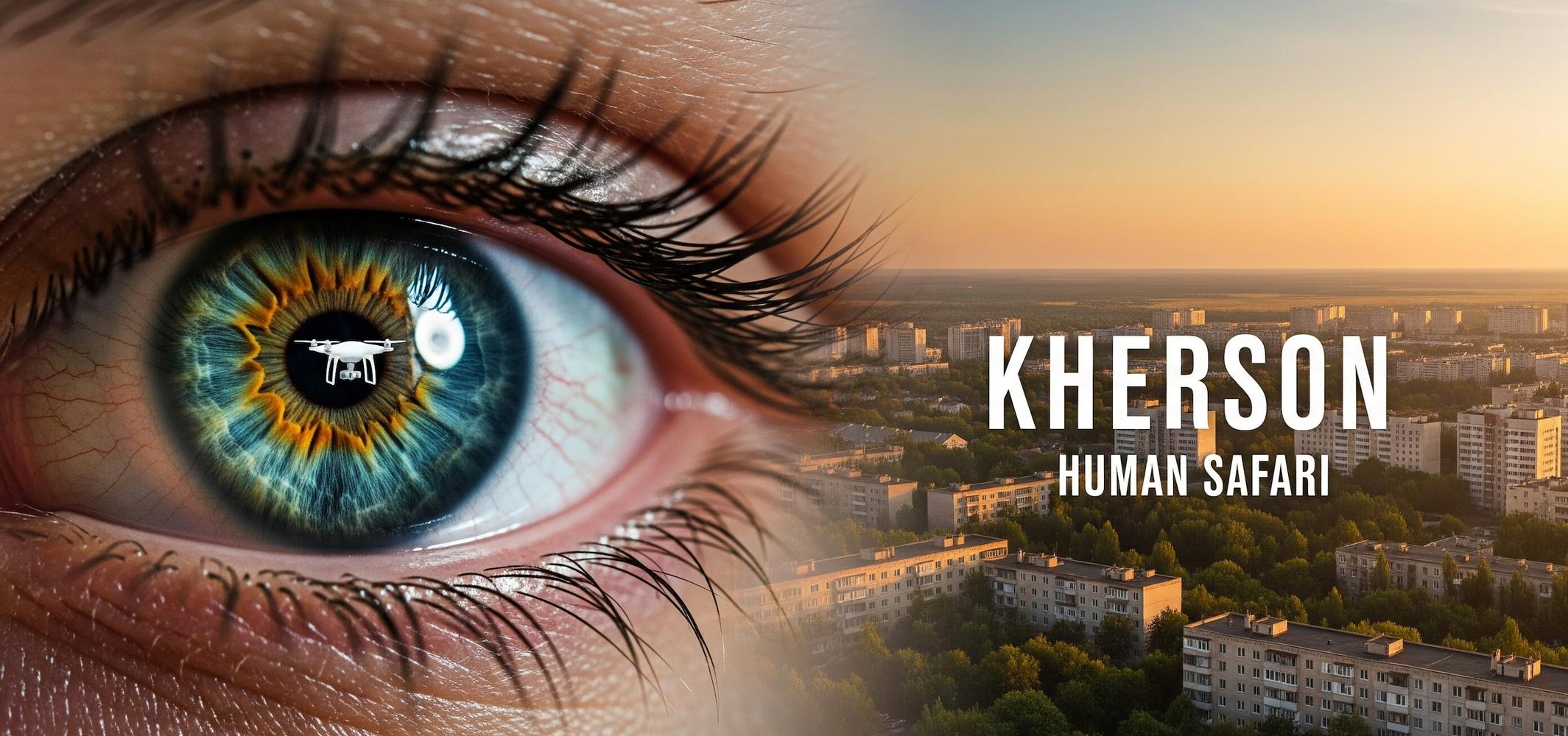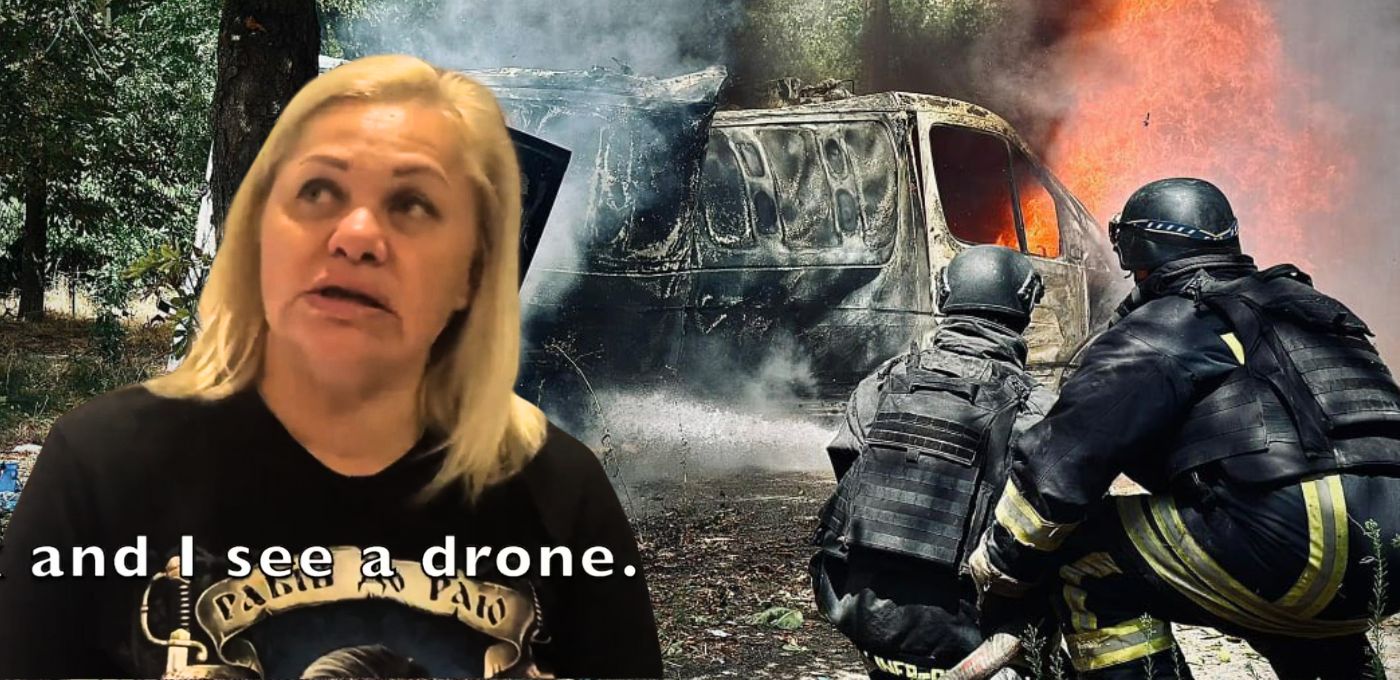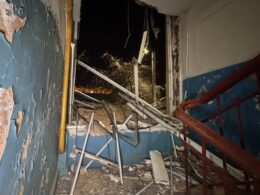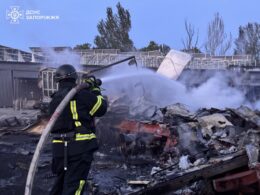An 84-year-old woman was killed by a Russian drone in Kherson Oblast on 20 October while tending to her goats—just weeks after explaining to an American journalist why she refused to evacuate despite daily attacks on civilians.
Such drone attacks occur each day in Ukrainian regions within the range of the small FPV drones, with Russians intentionally targeting civilians. This September, the UN confirmed that this Russian systematic civilian killing campaign amounts to a crime against humanity.
Larysa Vakuliuk, known locally as Baba Lora or Grandma Lora, was walking with two goats in the Antonivka neighborhood of Kherson when a Russian FPV drone struck them. She died instantly. Both goats were also killed.
"Her legs were blown off, she was blown to pieces," said Zarina Zabrisky, the American journalist who interviewed Vakuliuk in September.
Kherson's Main Directorate of the National Police confirmed the death on 21 October.
"She was a tiny little lady that showed up near Antonivka, such a curious figure, dressed in a white, almost starched shirt, with bright eyes and a whimsical smile," Zabrisky, who is now in Kherson, told Euromaidan Press. She found out about the death of Lora from the local Telegram channel.
"I've seen a lot of deaths in my three-and-a-half years of reporting on the war, but this one really got to me. I was so angry, I was banging my fists off the wall."
The most cynical part is that the Russians see the civilians and deliberately target them, Zabrisky said: "They kill them while seeing them. They see that it's a little old lady."
Sadism is part of it, but the civilians and animals also become training targets for the Russians. Military sources told Zabrisky that the Russians have a pilot school in Rostov-on-Don, the graduates of which are sent to occupied Ukraine near Kherson to practice.
That's why the Russian drone pilots hit goats, dogs—and old ladies.
However, the FPV drones are only one small part of the deadly arsenal with which Russia strikes Kherson: Zabrisky says that they hit the city each hour, destroying a block a day with aerial bombs, artillery, mortars, and even Shahed drones—usually reserved for long-range attacks.

"All are scared, but each has hope"
In her September interview with Zabrisky, Vakuliuk explained why she stayed in Antonivka despite the constant threat. She had over 20 goats and felt responsible for them. Russian shelling had already destroyed her house, as well as nine apartments nearby.
"I'm ancient. What should I be afraid of? Everyone is afraid. All are scared, but each has hope," Vakulyuk told Zabrisky.
I can’t. The monsters killed her.
— Zarina Zabrisky 🇺🇸🇺🇦 (@ZarinaZabrisky) October 20, 2025
I spoke to her a few weeks ago. For f^^* sake. God damn, god damn them, god damn Russians.
Burn in hell https://t.co/yfChLvcGPb
She also shared a grim observation, sharing that all the cattle herders who herded cows in the village have already been killed by Russian attacks.
Most people who remain in Kherson live in basements due to the heavy Russian shelling, Larysa Vakuliuk told Zabrisky in September. They have nothing but their chickens, yet they stay, "because it's their own."
"You should help us, from America," Vakuliuk implored.
Kherson's "human safari"
Vakuliuk's death is part of what the UN Commission of Inquiry on Ukraine has documented as deliberate, systematic attacks on civilians with short-range drones—strikes that constitute crimes against humanity of murder and war crimes of attacking civilians.
In findings released on 22 September 2025, the Commission concluded that Russian forces operating from the left bank of the Dnipro use drones with real-time tracking to pursue individuals, drop explosives directly on them, and attack civilian vehicles.
"The circumstances of the attacks show the perpetrators' intention to kill, harm and destroy," said Erik Møse, chair of the inquiry.
The Commission documented drone assaults across Kherson, Dnipropetrovsk, and Mykolaiv oblasts, spanning more than 300 kilometers of front-line territory. Russian forces killed 133 civilians and injured 1,350 between July and October 2024 alone in what locals call "human safaris."
By spring 2025, Kherson residents reported up to 100 drone attacks daily. Civilian casualties from explosive weapons in Ukraine rose by 40 percent in the first eight months of 2025 compared to the previous year, with drone strikes representing a growing share.
"Drones chase us, we hide from them," one Kherson resident told UN investigators. "Drones sit on rooftops, and if they see something, there will be consequences."
The Commission also reported that ambulances, fire engines, and other emergency responders bearing visible markings were struck, preventing life-saving work in the aftermath of attacks.
Documenting the hunt
Zabrisky has been documenting Russia's systematic targeting of Kherson civilians since July 2024, when she first reported on the "human safari" in international media.
Her documentary film "Kherson: Human Safari," released this year, captures life in Kherson Oblast during Russia's full-scale invasion. The film was shot between September 2023 and June 2025 and is available for free viewing at khersonhumansafari.com.
The documentary features testimony from Kherson residents, including artist Alyona Maliarenko and composer Borys Hoina, alongside footage of drone attacks on civilians.
"When civilization is in decline, and your city is in ruins—what do you do to survive... and remain human?" Zabrisky asks in the film.
Russia has occupied the left bank of the Dnipro River in Kherson Oblast since retreating from the city of Kherson in November 2022. The city remains under constant artillery, missile, and drone attacks from Russian forces across the river.

Inside Human Safari: the film that captures Russia’s drones hunting Ukrainians like prey
I can’t. The monsters killed her.
— Zarina Zabrisky 🇺🇸🇺🇦 (@ZarinaZabrisky) October 20, 2025
I spoke to her a few weeks ago. For f^^* sake. God damn, god damn them, god damn Russians.
Burn in hell https://t.co/yfChLvcGPb








